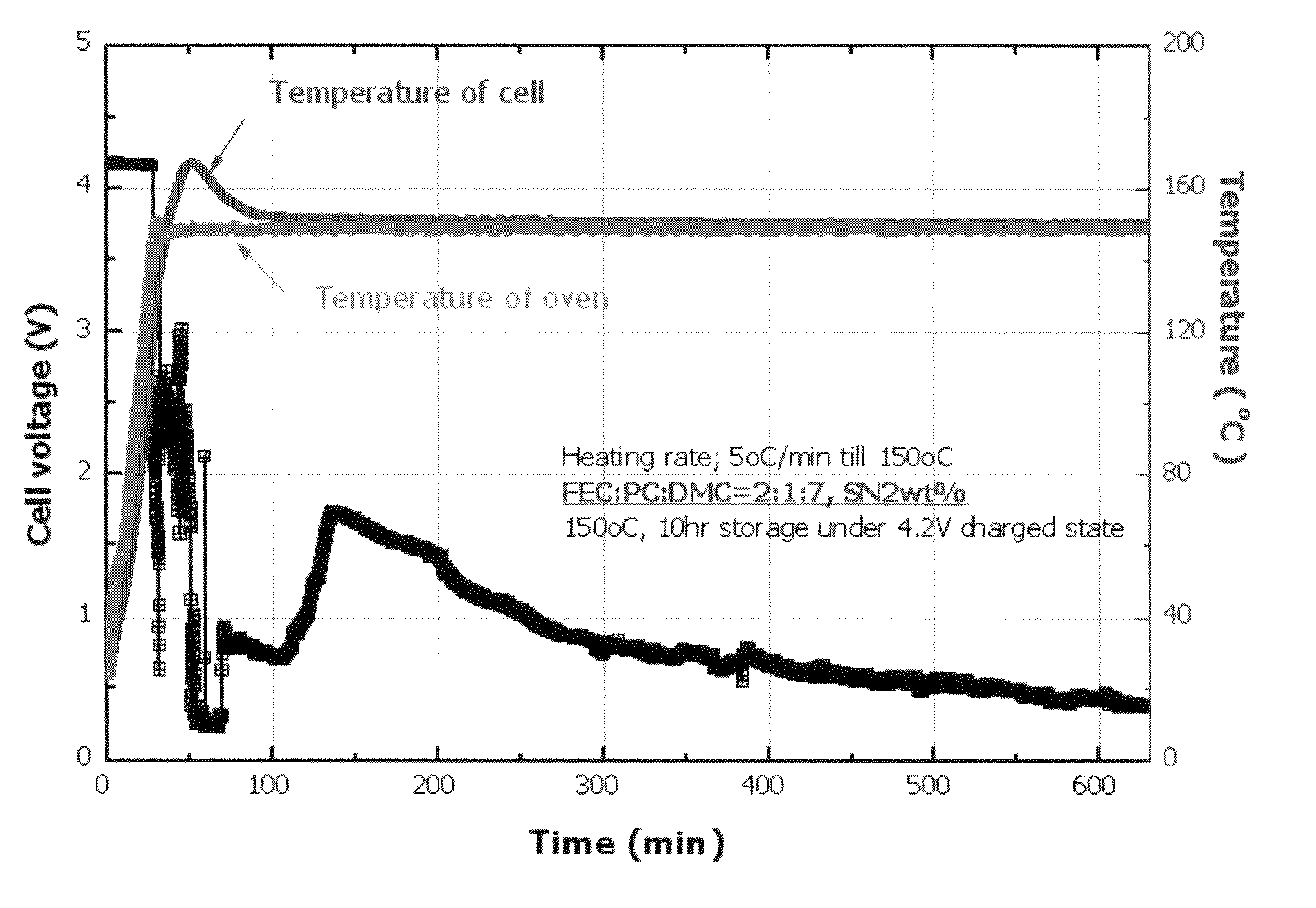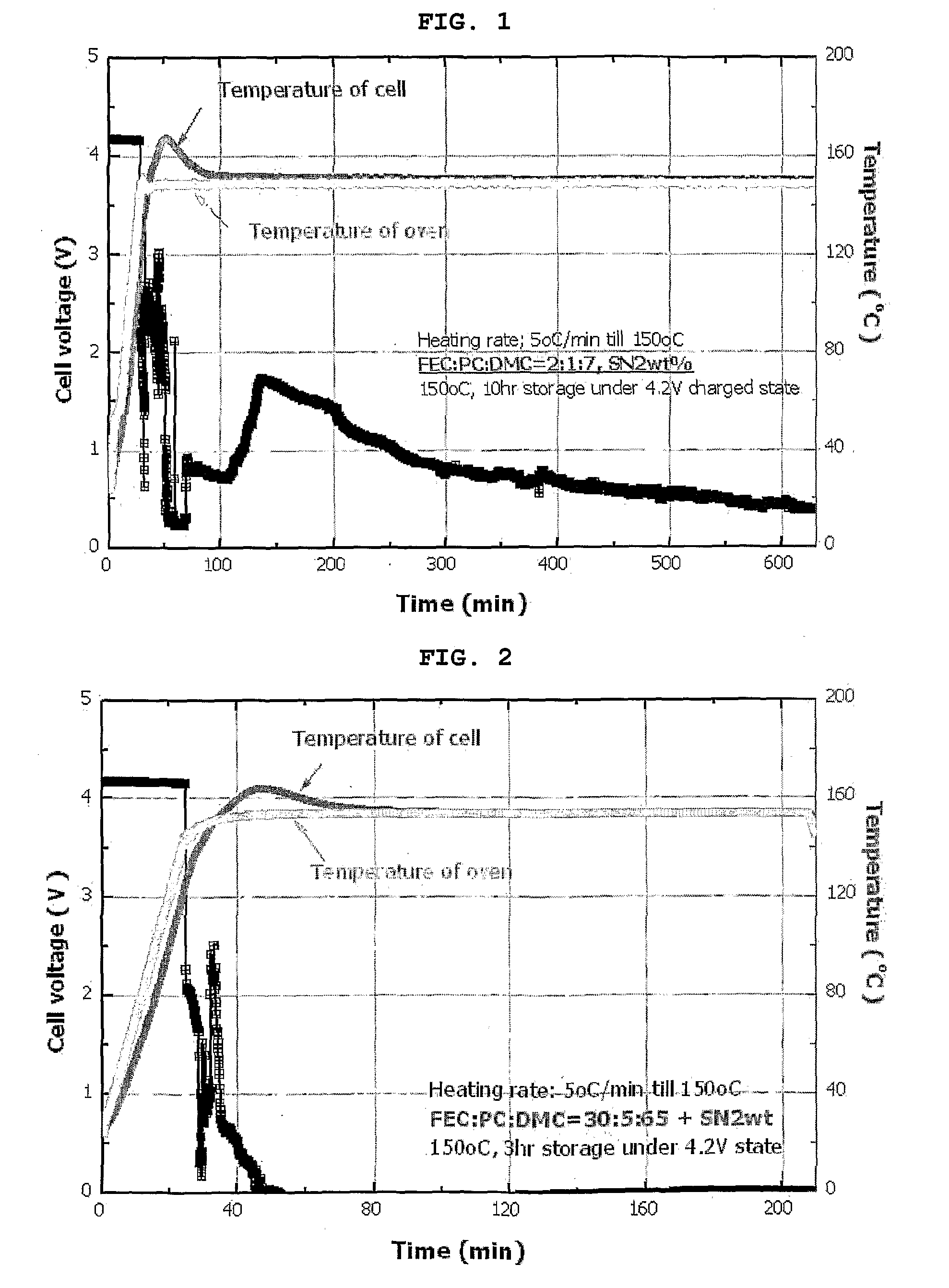Non-Aqueous Electrolyte and Electrochemical Device With an Improved Safety
a technology of electrochemical devices and electrolyte, which is applied in the manufacture of non-aqueous electrolyte cells, cell components, final products, etc., can solve the problems of battery ignition and explosion, high film thickness, and the inability to realize a high capacity of the battery, so as to prevent the ignition of the battery
- Summary
- Abstract
- Description
- Claims
- Application Information
AI Technical Summary
Benefits of technology
Problems solved by technology
Method used
Image
Examples
example 1
[0054]An electrolyte used in this Example was a 0.8M LiPF6 solution having a composition of FEC:PC:DMC=2:1:7. To the electrolyte, 2 wt % of succinonitrile was added. Artificial graphite and LiCoO2 were used as an anode active material and a cathode active material, respectively. Then, a cylindrical battery was manufactured according to a conventional method.
example 2
[0055]A cylindrical battery was manufactured in the same manner as in Example 1, except that the composition ratio of the carbonate solvent containing fluoroethylene carbonate (FEC) was 30:5:65.
example 3
[0056]A cylindrical battery was manufactured in the same manner as in Example 1, except that 5 wt % of butyronitrile was used instead of succinonitrile.
PUM
 Login to View More
Login to View More Abstract
Description
Claims
Application Information
 Login to View More
Login to View More - R&D
- Intellectual Property
- Life Sciences
- Materials
- Tech Scout
- Unparalleled Data Quality
- Higher Quality Content
- 60% Fewer Hallucinations
Browse by: Latest US Patents, China's latest patents, Technical Efficacy Thesaurus, Application Domain, Technology Topic, Popular Technical Reports.
© 2025 PatSnap. All rights reserved.Legal|Privacy policy|Modern Slavery Act Transparency Statement|Sitemap|About US| Contact US: help@patsnap.com



